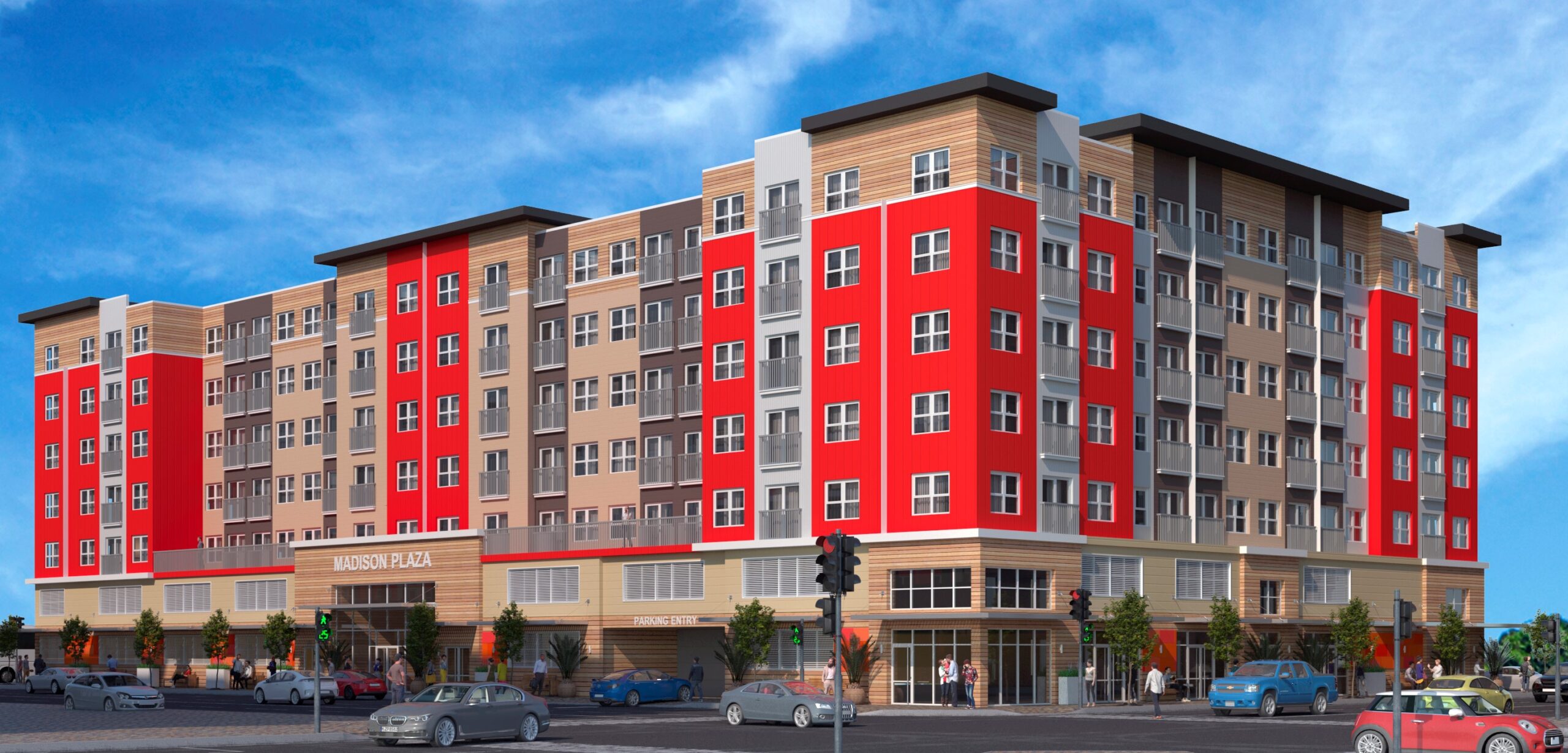Demand for centrally located property in Seattle remains high, despite health and economic concerns from the Covid-19 global pandemic. But geographic constraints, in addition to the waning supply of developable parcels, makes new development increasing difficult.
GIS views these market obstacles more like opportunities — for specialization. We have a long history of developing and constructing buildings on highly complex urban parcels characterized by the following conditions:
- Environment clean-up
- Tight urban parcels
- Steep slope sites
Project Site Tour
Madison Plaza in Kent
GIS recently started construction on Madison Plaza, a 7-story mixed-use residential building with 157 market-rate units over a 2-floor retail podium. The site is unbeatable — just steps away from Kent Station, the ShoWare Center, and a host of other local service and lifestyle amenities.
Designed by IHB Architects, Madison Plaza features a robust on-site amenities program – 1,200 SF of ground-floor retail, secure entry lobby, water features, fitness center, game-room lounge area, bike storage and washing, turf and dog run, BBQs and a 12,000-SF rooftop gathering space, to name just a few. The building will also have 157 parking stalls for residents and their guests.
The TOD is perfect working professionals, particularly those in the tech space. And, there’s tremendous demand for upscale apartment homes in the area, with most existing projects at least 3 years old. Construction will be complete in approximately
A: There are several, for sure, with a couple that immediately come to mind. First, the regulatory climate has become a major issue for new project development and permitting, especially with the complexity of commercial projects, evolving infrastructure, and the recent pandemic. The barriers to entry are now so high that the separation between giant projects and infill developments is becoming wider and wider every year.The other issue, which is related, that I think about frequently these days is the remote-work environment. Its adoption in construction and real estate has been pretty seamless, in fact. But as industry professionals become used to remote working, it’s getting harder to convince them that real, one-to-one face time remains critical for problem resolution, team cohesion and collaboration. In addition, measuring employee performance remains a significant issue — and sometimes, a challenge — in today’s remote work environment.
The Executive Minute
Eugene Gershman, CEO, GIS Companies Group

